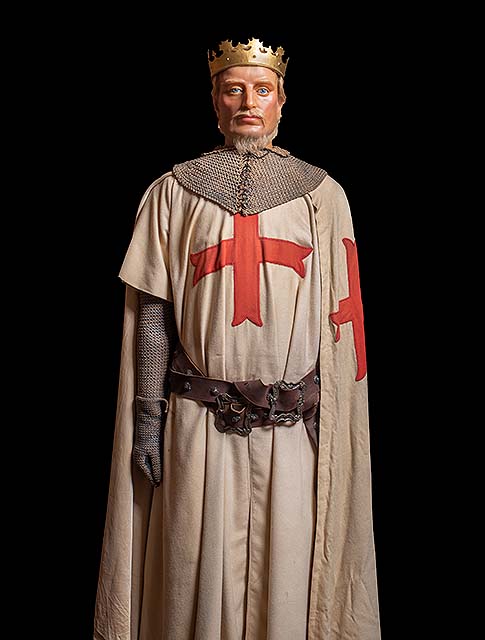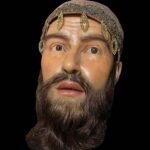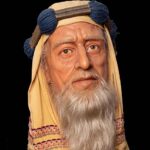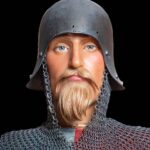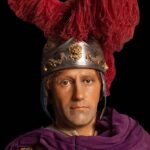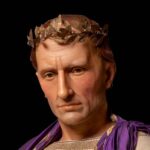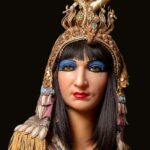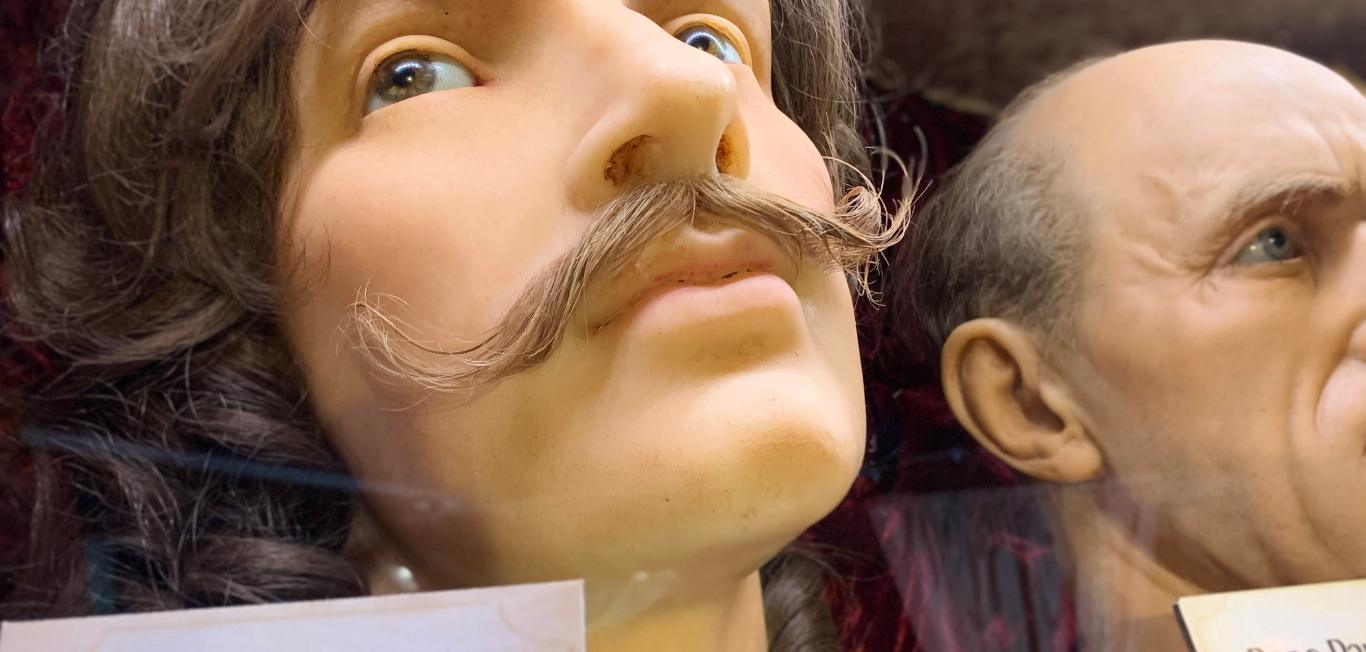Who Was King Richard I?
In 1157, the history of England and the image of what a king is was forever shifted by the birth of the future King of England, Richard I, commonly called Richard the Lionheart (Cœur de Lion), Richard the Lionhearted, or simply Richard Lionheart. He is generally regarded as one of the best kings of England, and the history books dedicated in his name certainly paint a romantic picture of his reign. Despite his popularity and fame, Richard the Lionheart accounts show that much about him is misunderstood, or even greatly unknown.
It is true that his military exploits were mostly successful due to his renowned skills in military strategy; however, for the most part, these exploits were not strategically important to England, and sometimes even sacrificed the betterment of England. They were extremely entertaining and fired up the English populace, feeding into their romantic notions of English power and King Richard I himself.
Mystical and poetic legends, some created by poets of the time and others through poetry the king himself created, set the tone for King Richard the Lionheart’s reign. He was a brave soldier and an intellectual king who embarrassed English enemies and was saved through sheer English loyalty. However, his history is not that simple.
DID YOU KNOW?
King Richard was a brave soldier and an intellectual king who embarrassed English enemies.
Interesting Facts
Despite being king of England for 10 years, King Richard I only spent six months of his reign in England.
Richard I of England is known for his strong connection to his kingdom and his ruthless pursuit of the protection of that land. However, the facts of Richard I show that the king spent barely 5% of his reign on that land.
Richard I tried to depose his father, Henry II, multiple times.
Richard the Lionheart and his father, King Henry II, did not agree on much in the ways of ruling, so it is no surprise that they came to blows several times before King Richard I eventually took the throne. The first of these conflicts was a rebellion, during which Richard I actually joined his brothers in rising up against their father. The second conflict was when Richard I decided he wanted the throne and needed to take it from his father.
Despite it traditionally being the duty of a king to bear children, Richard I never had children.
King Richard I did marry Berengaria, the daughter of the king of Navarre on May 12, 1191, but they never had any children. It is speculated that the lack of children between the two was due to the fact that Richard I spent little time with his wife. More of his time was devoted to ruling his country, choosing to fight wars in far-off places. Or, this could have been due to his lack of consideration for any woman (save his mother), as he only married Berengaria as a strategic move to obtain control of the Kingdom of Navarre.
Richard I spent a year in captivity after returning from the Third Crusade.
The king was captured by Duke Leopold of Austria and transferred to the hold of the Holy Roman Emperor, who held him for ransom while England gathered the money needed to secure his freedom.
King Richard the Lionheart was crowned twice.
After his father’s death in 1189, King Richard I was crowned for the first time during his coronation. Then, years later, after his return from the Crusade and his victory over his brother’s uprising in 1194, Richard I was recrowned at Winchester.
King Henry II betrothed his son Richard I at a mere nine years old.
King Richard I’s first engagement was not to his future wife, Berengaria of Navarre, but to the daughter of French King Louis VII, Princess Alais. This engagement happened when they were both extremely young and never actually came to pass. Although, King Richard I kept Princess Alais as a prisoner for 25 years, during which he also treated her as his mistress.
Richard Lionheart was an English king who probably didn’t speak English.
Historians have confirmed that Richard the Lionheart spoke French and Occitan (the languages that he used to write poetry); however, despite being one of England’s most popular kings, most believe that Richard I did not speak the language of his land. It is also known that English did not become the official language of the royal family for another 200 years.
King Richard I’s coronation was controversial and ominous.
According to records, during the ceremony to crown King Richard the Lionheart, several “evil omens” occurred. First, a bat fluttered around the king’s head during the ceremony and, second, a mysterious ringing bell could be heard.
Richard the Lionheart tried to return from the Crusade in disguise.
During his time fighting in the Third Crusade, Richard I managed to make many enemies. And so, when he was returning home through enemy territory, he tried to use a disguise to get himself there safely. This was not a success, and the king ended up in captivity for a year. However, this disguise strategy did inspire the Robin Hood depiction of Richard I in which he disguises himself and joins the Merry Men.
Early Life of King Richard I
King Richard I of England was born on September 8, 1157, CE, in beautiful Beaumont Palace in Oxford to mother Eleanor of Aquitaine (1122-1204 CE) and father Henry II of England (1154-1189 CE). Richard I of England is known today for his classic knightly chivalry, which he learned at a very young age. His education was overseen mainly by his mother who had a love for medieval literature and its teachings of kingly honor and dignity, which she passed on to her son. It is likely due to her involvement in his education that, despite being her third son, Richard I quickly became his mother’s favorite child. In fact, Richard I spent his early life as Duke of Aquitaine, a title connected directly to his mother. Despite his perfectly royal upbringing and immaculate relationship with his mother, Richard I’s father-son relationship was far from picturesque.
DID YOU KNOW?
Richard I of England is known today for his classic knightly chivalry, which he learned at a very young age.
In 1172, Richard I and his brothers rose up against their father in a great rebellion, but after his father invaded Aquitaine (where Richard I was Duke) twice, Richard I surrendered and received a pardon. The sides of this original rebellion, however, would flip when the Gascons revolted against Richard I’s harshness as a duke and called in his brothers, the “Young King” Henry and Geoffrey of Brittany, to take down Richard I. King Henry II then actually came to Richard I’s rescue and, after the death of “Young King” Henry and the fall of the uprising, Richard I became Henry II’s heir. However, this came with the cost of no longer ruling Aquitaine, which Richard I would not give up, so he enlisted the help of King Philip II of France (who would later become his enemy) to force Henry II to acknowledge Richard I as heir despite not giving up Aquitaine. On July 6, 1189, Philip and Richard I succeeded with the death of Henry II, and Richard I was then officially King Richard I of England.
Personal Life
Richard the Lionheart is one of the most popular kings of England to have ever lived. He is known for his great military strategy and success as a warrior. He took command of his first army when he was just 16 years old. He is also known for his highly attractive physical appearance. He was the King of England from 1189 to 1199 after the death of his father, King Henry II, during which he also ruled as Duke of Normandy.
The history of Richard I of England is a long and complicated series of battles, sieges, and wars. However, not all of Richard I’s life revolved around fighting. In fact, the teaching of Richard I’s mother, Queen Eleanor, in art and literature gave Richard I a penchant for one of his most successful pursuits: poetry. Historians today acknowledge that, despite waging grand wars, full of English success, Richard I bled English coffers dry on faraway wars throughout all of his reign. However, most historians can’t find any fault in his work as a poet, where he is regarded as a master of language, who used his poetry to muddle through hardship. During his time in captivity in 1192, Richard I wrote one of his most famous poems, “Ja Nus Hons Pris,” or simply “Prison Song.”
A King’s Crusade and His Legacy
Richard I of England was known during his time as a considerable political tactician and a ruthless military leader who embodied the knightly traits of valor, generosity, and chivalry. He is best known for his ambition and activity in the Third Crusade, which he got involved with during his reign from 1189 to 1199 CE, after the capture of Jerusalem in 1187 by Saladin. Richard I’s involvement in the Third Crusade was chock-full of real-world exploits that gave birth to hundreds of romantic and incredible stories of his bravery and military success. The best example of this would have to be the story of Richard the Lionheart and the minstrel Blondel.
On his way back from the Crusade on December 21, 1192, Richard I was captured by Duke Leopold of Austria just outside of Vienna. Leopold was a great example of how Richard I made enemies, as the lionhearted king had recently embarrassed Leopold by casting down his banner. Leopold subsequently handed Richard I over to the Holy Roman Emperor, Henry VI, and there the king was held captive for a year while England raised his ransom money. It is here that the story becomes legendary. As the story goes, Richard I’s loyal minstrel Blondel found the king via a special song and was able to bring his English allies there to save him. Today, images of King Richard I are still greatly impacted by the legendary nature of his rule. Most famous of these would have to be the story of Robin Hood.
Robin Hood has been a legend that historians can date back to at least 1377 but is better known today from the 1973 Disney animated film and the 1938 Hollywood classic The Adventures of Robin Hood. In these depictions, Robin Hood is a man who steals money from the rich and gives it to the poor, all the while evading the law. In this case, “the law” refers to Richard I’s real-life brother Prince John who, in the tale of Robin Hood, takes over and becomes a horrible tyrannical ruler while Richard I is fighting in the Crusades. This fight over the throne was based in part on true events, as Prince John would befriend Richard I’s lifelong enemy, King Philip of France, and temporarily try to rise up against Richard I’s rule.
Despite the overwhelmingly positive image that popular culture has for Richard I, some depictions of the king have chosen to move away from this generous depiction and more toward highlighting the carelessness with which he ruled England and his lack of presence (both literal, due to him only ruling for half a year on English soil, and metaphorical) during his reign. In both Tariq Ali’s novel The Book of Saladin (1998) and Jan Guillou’s The Knight Templar (1999) Richard I’s actions during the Third Crusade are depicted not as courageous and successful but rather as merciless and, often, laughably dumb.
DID YOU KNOW?
Images of King Richard I are still greatly impacted by the legendary nature of his rule. Most famous of these would have to be the story of Robin Hood.
Late in Life
After achieving his victory over Saladin (whose rise encouraged Richard I’s involvement in the Crusades in the first place) with the Treaty of Jaffa (1192), which ended the siege of Acre and the Battles of Arsuf and Jaffa, Richard I of England began his long journey home. This included several more adventures, including his capture by Duke Leopold of Austria and the Holy Roman Emperor as well as his brother’s attempted subversion. Richard I’s brother Prince John had been a mild thorn in his side for much of his rule, but in the two years that comprised Richard I’s return to England (1192-1194), he occupied Windsor Castle and gathered troops, including Flemish mercenaries, to invade England. However, upon the ransom payment and release of Richard I, Prince John fled to the safety of his friend King Philip Augustus’ protection in the French court.
Finally, King Richard I of England was back in his homeland, but it was not to last. Almost as soon as he returned, Richard the Lionheart set off again, this time to France where he defended and recovered various English territories from King Philip. This fight, however, would be Richard I’s last, as five years later on March 25, while patrolling the siege lines of the small castle of Châlus-Chabrol, Richard the Lionheart was hit in the left shoulder by a crossbow bolt. On April 6, 1199, Richard the Lionheart died from this wound in his beloved mother’s arms.
FAQs
How did Richard I become king of England?
After a long series of battles, Henry II gave the title, but Richard I didn’t like the compromise struck and fought his father until Henry II’s stress-related death.
What was Richard I like as a king?
People call Richard I of England “Richard the Lionheart” after his “king of the jungle”-like tactical and strategic abilities, but also after his animalistic ruthlessness in war.
What happened to Richard I on his way back to England from the Crusade?
When traveling back to England from the Crusade, Richard I of England was taken captive by Duke Leopold of Austria and the Holy Roman Emperor, where he was held for ransom.
How did Richard I die?
He was hit in the left shoulder by a crossbow bolt during a siege in March 1199 and died a few weeks later.
